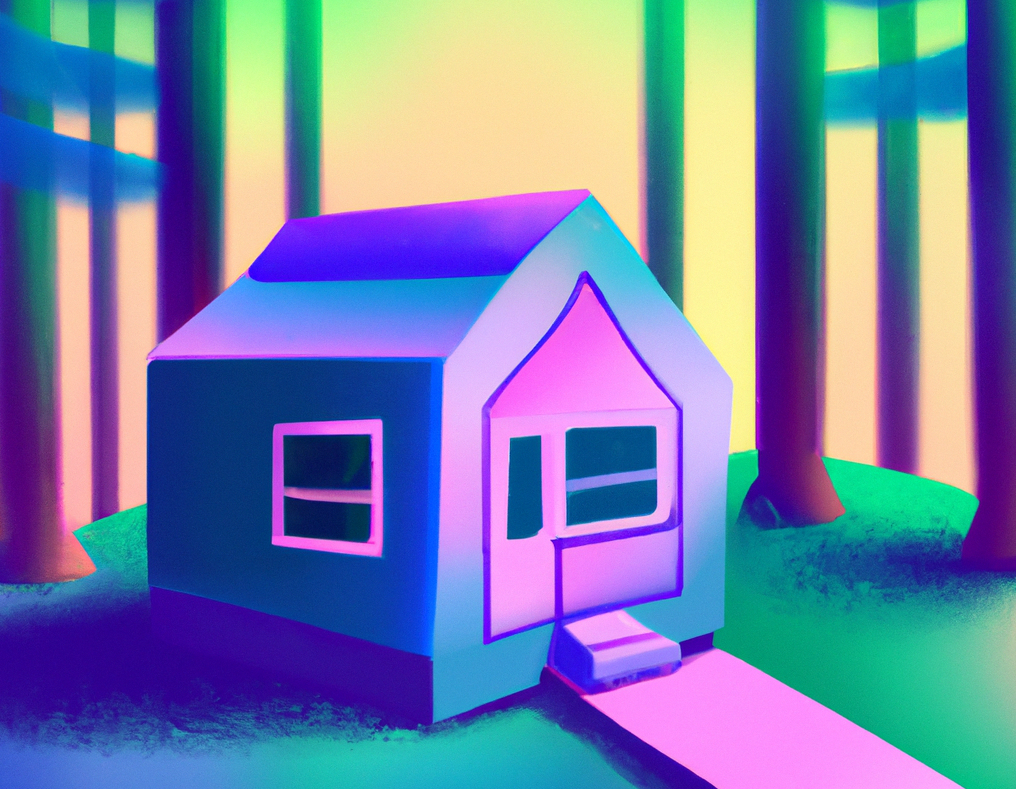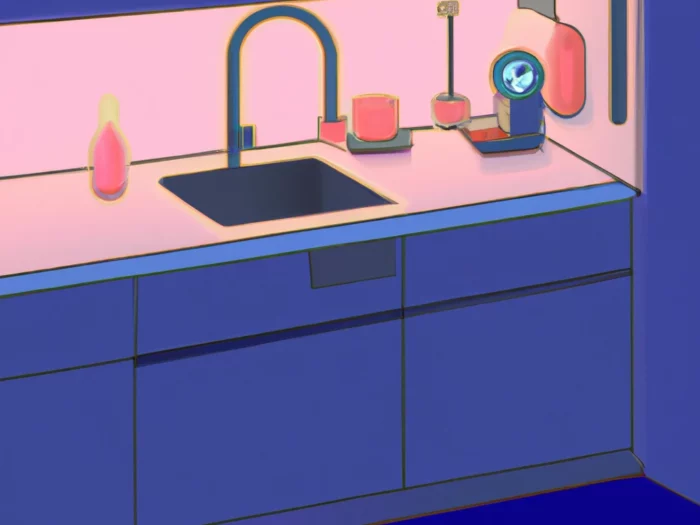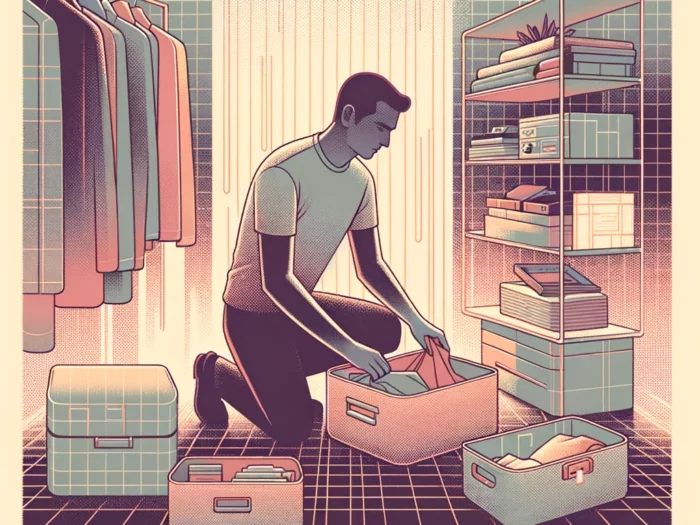When I first bought the domain, hipdiggs.com, a few years ago, I had a dream. I wanted to start a blog about the tiny house movement. I thought that building and living in a tiny house would be a great way to support the ideal of minimalism. I’ve changed my mind. The tiny house movement might be doing more harm than good for the cause. In some cases, tiny houses are illegal.
Living In Small Spaces Isn’t Too Bad
Throughout my life, I’ve lived in many small spaces. I’ve rented single rooms, travel trailers, studio apartments, and small houses. I’ve lived simply. I wasn’t counting, but in my 20s, I probably owned less than 100 material possessions, not counting my cassette tapes and small book collection. Through most of my 30s, I lived in a studio apartment while attending college and grad school. It wasn’t until my 40s that I had a kid and began to accumulate more stuff.
Now I’m buying a 1200-square-foot house. It’s bigger than my dream home, but it’s what I could find in my town without living in the ghetto.
I know what you’re thinking, “Hypocrite! How can you promote simple living if you’re not living in a smaller home?”
After all, it’s just my daughter and me. Why do I need three bedrooms and two bathrooms? Those of you who have girls might understand. I’ve felt a little guilty about living such an upscale life (sarcasm intended) while promoting minimalism, but lately I’m having second thoughts. Maybe what I’m doing is not so bad after all. In fact, I think scaling down without going to extremes will be the way to create large-scale change. The tiny house movement in it’s current form will never find its way into the mainstream. In fact, it’s doomed to fail.
Why The Tiny House Movement Is Doomed To Fail
- The tiny house movement is a counter-culture movement: I was born in the early 1960s. As a kid, I remember the hippies. People were living in Volkswagon busses and traveling around the country smoking pot, preaching about love and freedom. The tiny house movement feels similar. There may be less pot smoking, but the idea behind it is the same: to find ways to live more freely. The problem is that counter-culture movements rarely work their way into mainstream culture.
- The tiny house movement has an escapist mindset: I’ve often dreamed of escaping the 9-to-5 world and moving to a cabin in the mountains. I’ve pictured myself living in a tiny house next to the ocean. It’s an escapist fantasy. Sure, I might be able to scale down and live in a quiet and peaceful place when I retire, but right now I need to work and take care of Annie. Let’s be realistic. I wonder how many people who build tiny houses live in them longterm? I’ve known several people who have moved out to the country, only to abandon the lifestyle after a few years due to the constraints and limitations.
- The tiny house movement is evasive of authority: If we want to make a new culture stick, we need to work with authority, not against it. Most tiny houses are now built on wheels. This makes little sense to me. If I wanted something on wheels, I’d just buy a small travel trailer. But I understand that people build tiny houses on wheels to evade building codes and taxes. Evading rules and regulations is not a great way to move a cause forward. It’s hard to get governmental and cultural support for something that goes counter to the status quo.
- The tiny house movement is not practical: Okay, I’ll admit, they’re cute. I’ve even sketched out a few of my own floor plans. I find it fun and challenging to make the most efficient use of space. But 100 to 200 square-foot homes are not practical for most people. They also aren’t practical to build in suburban areas. Not everybody who wants to live simply wants to park their house on wheels on a friend’s property out in the boonies. As we age, many of us would rather be closer to cultural activities, medical facilities and other conveniences of small towns or cities.
- The tiny house movement appeals to a small population: The idea of building a little house on wheels only appeals to a certain type of person. In fact, some of those people seem a little bit off: recluses, rebels, and drifters. Hey, I fit the bill too, but this may not give the movement the best possible public image.
I’ve just painted a pretty bleak picture of the future for the tiny house movement. But not all is lost. I believe there are alternative ways to make the tiny house movement work.
5 Ways To Help The Tiny House Movement
- Ditch the wheels: I said it before and I’ll say it again: if I wanted something on wheels, I’d simply buy a travel trailer, a van, or a small motorhome. That would actually give me more freedom. I could park in campgrounds and Walmart parking lots while I travel. I’d be living in something that was specifically made for traveling. When I think of a home, I think of permanent structures. I see tiny homes on wheels as glorified trailers. I find it a bit silly.
- Accept reality: Why are so many people unhappy with their lives. As a blogger, I’ve noticed that everybody is trying to escape. They want to quit their jobs. They want to live away from the masses. They want to attain their vision of freedom. Here’s the problem: it takes money and/or hard work to get there. I’m not trying to rain on your parade, but sometimes we need to suck it up and accept the real world while we work toward our dream.
- Increase the size: Most cities and counties have building codes and zoning laws that make it hard to build tiny houses. So stop making 100 to 200 square-foot houses. Instead, increase the size to 400-700 square feet. This will make it much easier to build small-sized homes on existing lots.
- Stop fighting authority: Remember the old song that said, “I fought the law and the law won?” It’s true. Fighting authority by evading rules and regulations does little to promote the tiny house movement to larger-scale populations. Instead of fighting authority, find ways to work within the current social and political structures to promote simple living and smaller homes.
- Buy existing structures: I’ve travelled extensively around the United States. Most every town has its fair share of studio, one-bedroom, and two-bedroom condominiums and homes. Why reinvent the wheel? What if those of us interested in small-home living started buying little old, dilapidated homes, and began fixing them up? We could begin to make our communities more appealing while setting an example for others. We could show our kids that we can live simply without going to the extreme of evading rules and regulations. We could begin to work with our governmental agencies, and in turn, they might begin to find favor upon the tiny house movement.
If you’d like to see more people using less resources, then it’s time to get more realistic about small-home living. If my arguments have made you think a little differently about the tiny house movement, I encourage you to share this article.
Let’s continue to push for ways to live simple. We can do it without tiny house failures or tiny house regrets. Let’s continue to promote downsizing and minimalism. We can do it in a way in which we can work within the current cultural and political restraints. Let’s make it cool for more people to join the tiny house movement by changing the way we present the movement.













